-
June 6, 2015 – 4:00 p.m. Sabatini Building, Auditorium and June 12, 2015 – 5:30 p.m. Filmoteca Española, Cine Doré. Theater 1
Century of Birthing [Siglo ng pagluluwal]
Digital video, 2011, black and white. Original version, subtitled in Spanish, 360’
Screening format: digital archiveAfter 10 feature films, in Century of Birthing (2011) Diaz turns the camera back towards himself, or at least towards an analogy of himself: a film-maker called Homer, who is trying to finish a film entitled Woman of the Wind. The different stories comprising the film are a reflection of each other, repeating visual and narrative motifs with complex arrangements, while the characters are taken from reality to fiction and vice versa. In the end the circumstances spread (or deteriorate) in such a way that the torturous experience Diaz went through to finish his film – Woman of the Wind was a real project he never finished – becomes about women “giving birth” to their respective destinies in this difficult six-hour process. It ends with a peasant woman giving birth to an unwanted child after being raped.
-
June 10, 2015 Filmoteca Española, Cine Doré. Theater 1
From What is Before [Mula sa kung ano ang noon]
DCP, 2014, colour. Original version, subtitled in Spanish, 338’
Screening format: DCPFrom What Is Before, winner of the Golden Leopard Award in Locarno in 2014, shows how Diaz integrates some of the innovations anticipated in his previous film Norte, the End of History, particularly the predominance of narrative elements over contemplative ones, without renouncing the characteristics which identified his films: the use of black and white, long and majestic sequence shots and the ambition of his story lines. From What Is Before begins in 1970 in a coastal town, a microcosm of the Philippines, where divergent social, political and religious interests converge just before the army take it over. It culminates in 1972, when martial law is proclaimed in the country.
-
June 11, 2015 Filmoteca Española, Cine Doré. Theatre 1
Storm Children: Book One [Mga anak ng unos]
Digital video, 2014, black and white. Original version, subtitled in Spanish, 143’
Screening format: DCPLav Diaz made this documentary just months after Typhoon Haiyan (known in the Philippines as Typhoon Yolanda) hit the island of Tacloban. The city has not yet been reconstructed; numerous huge stranded hulls spread across the countryside. What has the government done since then? Where is the aid that was promised so unrestrainedly? Half of the film is presented in pouring rain, forcing the viewer to wonder: What will happen when the next typhoon comes?.
-
June 13, 2015 Sabatini Building, Auditorium
Evolution of a Filipino Family [Ebolusyon ng isang pamilyang Pilipino]
Digital format, 2004, black and white. Original version, subtitled in English, 632’
Screening format: Mini DVComparisons could be drawn between Lav Diaz’s Evolution of a Filipino Family (2004) and Novecento (1976), Bernardo Bertolucci’s monumental film depicting the rise of fascism in Italy in the early years of the 20th century. With a running time of 10 hours and 32 minutes, Diaz’s film offers a panoramic view of a decade in Philippine history: the years of the dictatorial government of Ferdinand E. Marcos, stretching from the declaration of martial law to its fall and the arrival of Corazón Aquino in 1986, including episodes such as the Mendiola Massacre, in which police opened fire on a farmers’ protest. An epic story approached with contrast via the intimate narration of the lives of two families and an austere and fragile mise en scène.
Lav Diaz. The Evolution of a Filipino Film-maker
![Lav Diaz. Century of Birthing [Siglo ng pagluluwal]. Película, 2011](https://recursos.museoreinasofia.es/styles/large_landscape/public/Actividades/0_2.jpg.webp)
Held on 06, 10, 11, 12, 13 jun 2015
In collaboration with FILMADRID, a new space devoted to contemporary auteur cinema, the Museo Reina Sofía and Filmoteca Española (the Spanish Film Institute) welcome the retrospective Lav Diaz. The Evolution of a Filipino Film-maker, centred upon a contemporary director whose experiments with duration best represent the popular and tragic history of a community. This medium-scale retrospective presents the film-maker’s most recent work; unknown in Spain, it includes the premiere of his latest film, From What It Is Before. The series also incorporates the section “Focos” from the first edition of FILMADRID.
In his films Lav Diaz (Mindanao, Philippines, 1958) treads on a path that is as radical as it is identifiable and intimate. Unyielding and committed, his film work is the outcome of a dazzling blend of intimism and the epic as his view starts out from the concrete, from profound portraits of individuals enveloped in recognisable existential and moral crises, before reaching the collective – the tragic fate of the Philippine people. Thus, his work has been evolving since his debut at the end of the 1990s; a body of work that wholeheartedly spotlights the treatment of cinematic time, in the dialogue between the present and history, as well as the tangible and the immaterial. Shot in the rural areas of the Philippines, his films, often strictly in black and white and sometimes running for up to 11 hours, offer a fragile and precarious fresco of the desolation in the lives of the Philippine people during the period of oppression under Ferdinand E. Marcos. Despite its impossible presence in film theatres, the work of Lav Diaz has not only taken centre stage at international film festivals (Locarno, Rotterdam and Toronto), it has also paved the way for the so-called Philippine New Wave, one of the most recent and decisive film movements, made up of directors such as Raya Martin, Brillante Mendoza and Khavn De la Cruz, among others.
In collaboration with
Museo Reina Sofía and Filmoteca Española
Organised by
FILMADRID. International Film Festival
Más actividades
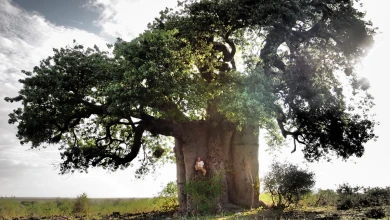
Francisco López and Barbara Ellison
Thursday, 11 December - 8pm
The third session in the series brings together two international reference points in sound art in one evening — two independent performances which converse through their proximity here. Barbara Ellison opens proceedings with a piece centred on the perceptively ambiguous and the ghostly, where voices, sounds and materials become spectral manifestations.
This is followed by Francisco López, an internationally renowned Spanish sound artist, who presents one of his radical immersions in deep listening, with his work an invitation to submerge oneself in sound matter as a transformative experience.
This double session sets forth an encounter between two artists who, from different perspectives, share the same search: to open ears to territories where sound becomes a poetic force and space of resistance.
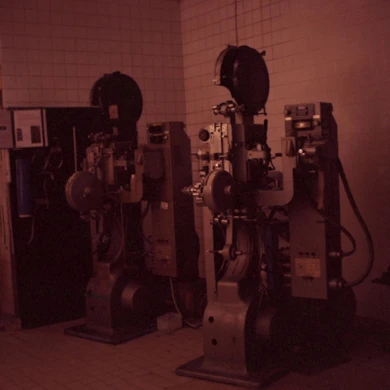
Long Live L’Abo! Celluloid and Activism
4, 5, 6 DIC 2025
L’Abominable is a collective film laboratory founded in La Courneuve (Paris, France) in 1996. It came into being in response to the disappearing infrastructures in artisan film-making and to provide artists and film-makers with a self-managed space from which to produce, develop and screen films in analogue formats such as Super 8, 16mm and 35mm. Anchored in this premise, the community promotes aesthetic and political experimentation in analogue film opposite digital hegemony. Over the years, L’Abominable, better known as L’Abo, has accompanied different generations of film-makers, upholding an international movement of independent film practices.
This third segment is structured in three sessions: a lecture on L’Abo given by Pilar Monsell and Camilo Restrepo; a session of short films in 16mm produced in L’Abo; and the feature-length film Une isle, une nuit, made by the Les Pirates des Lentillères collective.
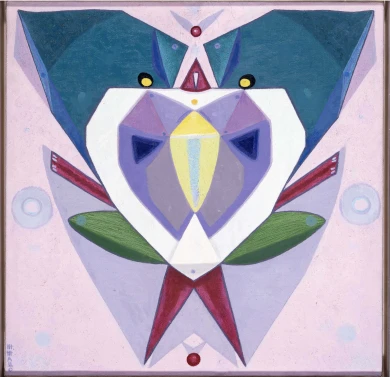
Estrella de Diego Lecture. Holding Your Brain While You Sleep
Wednesday, 3 December 2025 – 7pm
Framed inside the Museo Reina Sofía’s retrospective exhibition devoted to Maruja Mallo, this lecture delivered by Estrella de Diego draws attention to the impact of the artist’s return to Spain after her three-decade exile in Latin America.
Committed to values of progress and renewal in the Second Republic, Mallo was forced into exile to Argentina with the outbreak of the Civil War and would not go back to Spain to settle definitively until 1965 — a return that was, ultimately, a second exile.
Mallo saw out her prolific artistic trajectory with two impactful series: Moradores del vacío (Dwellers of the Void, 1968–1980) and Viajeros del éter (Ether Travelers, 1982), entering her most esoteric period in which she drew inspiration from her “levitational experiences” of crossing the Andes and sailing the Pacific. Her travels, both real and imaginary, became encounters with superhuman dimensions.
In parallel, her public persona gained traction as she became a popular figure and a key representative of the Generation of ‘27 — the other members of which also started returning to Spain.
This lecture is part of the Art and Exile series, which seeks to explore in greater depth one of the defining aspects of Maruja Mallo’s life and work: her experience of exile. An experience which for Mallo was twofold: the time she spent in the Americas and her complex return to Spain.
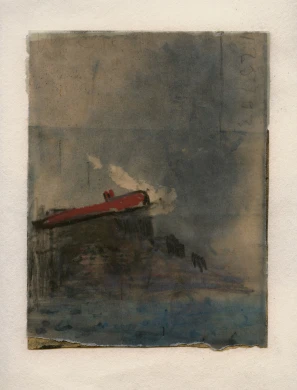
Juan Uslé. That Ship on the Mountain
Tuesday, 25 November 2025 – 7pm
Ángel Calvo Ulloa, curator of the exhibition Juan Uslé. That Ship on the Mountain, engages in conversation with artist Juan Uslé (Santander, 1954) in the Museo’s Auditorium 400 to explore in greater depth the exhibition discourse of this anthological show spanning four decades of Uslé’s artistic career.
The show casts light on the close relationship Uslé’s work bears to his life experiences, establishing connections between different stages and series which could ostensibly seem distant. Framed in this context, the conversation looks to explore the artist’s personal and professional journey: his memories, experiences of New York, his creative process, conception of painting, and ties with photography and film, and the cohesiveness and versatility that characterise his art. Key aspects for a more in-depth understanding of his artistic sphere.
The conversation, moreover, spotlights the preparatory research process that has given rise to this exhibition to grant a better understanding of the curatorial criteria and decisions that have guided its development.
These inaugural conversations, part of the main working strands of the Museo’s Public Programmes Area, aim to explore in greater depth the exhibition narratives of the shows organised by the Museo from the perspective of artists, curators and specialists.
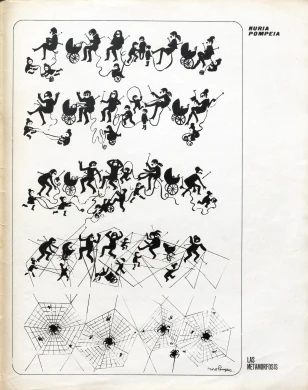
Crossed Vignettes
Friday, 21 November 2025 – Check programme
The Crossed Vignettes conference analyses the authorship of comics created by women from an intergenerational perspective and draws from the Museo Reina Sofía Collections. Across different round-table discussions, the programme features the participation of illustrators Marika, Carla Berrocal, Laura Pérez Vernetti and Bea Lema and researchers Viviane Alary, Virginie Giuliana and Elisa McCausland.
The aim of the encounter is twofold: to explore in greater depth the different forms in which women comic book artists have contributed to developing a counterculture; namely, the appearance of ruptures, reformulations and new genres within the ninth art. And to set up a dialogue which ignites an exploration of genealogies linking different generations of artists.
Moreover, the activity is put forward as a continuation to the exhibition Young Ladies the World Over, Unite! Women Adult Comic Book Writers (1967–1993) and the First International Conference on Feminist Comic Book Genealogies, held in April 2024 at the Complutense University of Madrid.
In redefining the visual narratives of the comic book and questioning gender stereotypes in a male-dominated world, women comic book writers and artists have impelled greater visibility and a more prominent role for women in this sphere. The study of intergenerational dialogue between female artists past and present enables an analysis of the way in which these voices reinterpret and carry the legacy of their predecessors, contributing new perspectives, forms of artistic expression and a gender-based hybridisation which enhances the world of comics.
The conference, organised jointly by the Museo Reina Sofía and Université Clermont Auvergne/CELIS (UR4280), features the participation of the Casa de Velázquez and is framed inside the context of the CALC programme The Spanish Artistic Canon. Between Critical Literature and Popular Culture: Propaganda, Debates, Advertising (1959–1992), co-directed by Virginie Giuliana. It is also the outcome of the projects Horizon Europa COST Actions iCOn-MICs (Comics and Graphic Novels from the Iberian Cultural Area, CA19119) and COS-MICs (Comics and Sciences, CA24160).



![Miguel Brieva, ilustración de la novela infantil Manuela y los Cakirukos (Reservoir Books, 2022) [izquierda] y Cibeles no conduzcas, 2023 [derecha]. Cortesía del artista](https://recursos.museoreinasofia.es/styles/small_landscape/public/Actividades/ecologias_del_deseo_utopico.jpg.webp)
![Ángel Alonso, Charbon [Carbón], 1964. Museo Reina Sofía](https://recursos.museoreinasofia.es/styles/small_landscape/public/Actividades/perspectivas_ecoambientales.jpg.webp)